Once again. A day after the pair
of heliacal stars Betelgeuze and the
Lord of Created Beings (Praja-pāti, δ
Aurigae) the Full Moon would
stand
at
the line for 18h (*273.4)
together with the Winnowing Basket
(γ
Sagittarii, Nash).
...
δ,
4.1, yellow, is on the head
of the Charioteer. It is
unnamed with us, but,
inconspicuous as it is, the
Hindus called it
Praja-pāti, the Lord of
Created Beings, a title also
and far more appropriately
given to Orion and to
Corvus. The Sūrya
Siddhānta devotes
considerable space to it;
but 'why so faint and
inconspicuous a star should
be found among the few of
which Hindu astronomers have
taken particular notice is
not easy to discover.'
...

|
473 - 449 =
24 |
|
 |
*22 |
 |
1 |
 |
|
Gb8-8 (449) |
Gb8-30 (471) |
Ga1-1 |
|
Bharani
(*41.4) |
Hyadum I
(*63.4) |
Ain (*65) |
|
May 1 (121 =
11 * 11) |
May 23 (143
= 11 * 13) |
MARCH 22
(*1) |
|
41 he ravi
pako |
1 he koro
tea. |
3 he
pukapuka. |
|
Tiputa.
Pau.: To
bore, to
perforate.
Ta.:
tiputa,
to pierce.
Mq.:
tiputa,
id. Ha.:
kipuka,
an opening.
Churchill.
Pilipuka,
between
midnight and
surise, or
about 3
A.M.;
Kihipuka,
corresponding
to sunrise,
or about 6
A.M. ...
(Fornander)
|

.jpg)
|
7 |
Winnowing Basket |
γ Sagittarii
(Nash) |
Leopard |
(273.7) |
Dec 19 (353) |
|
December
solstice |
|
8 |
South Dipper |
φ Sagittarii |
Unicorn |
(284.0) |
Dec 30 (364) |
|
9 |
Ox / Herd Boy |
β Capricornii
(Dabih) |
Buffalo |
(308.0) |
Jan 23 (388) |
|
10 |
Girl |
ε Aquarii
(Albali) |
Bat |
(314.8) |
Jan 29 (394) |
|
11 |
Emptiness |
β Aquarii
(Sadalsud) |
Rat |
(325.9) |
Feb 9 (405) |
|
12 |
Rooftop |
α Aquarii
(Sadalmelik) |
Swallow |
(334.6) |
Feb 18 (414) |
|
13 |
House |
α Pegasi
(Markab) |
Pig |
(349.5) |
Mar 5 (429) |
|
March equinox |
|
14 |
Wall |
γ Pegasi
(Algenib) |
Porcupine |
(1.8) |
Mar 22 (81) |
|
15 |
Legs |
η Andromedae |
Wolf |
(11.4) |
Apr 1 (91) |
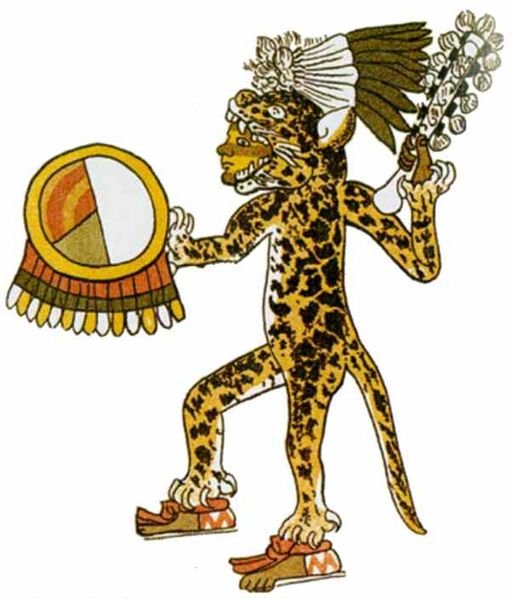
The current stars in
December 19 (353) had at
the time of the Bull
been positioned 64 days
earlier, viz. in day 353
- 64 = 289 (OCTOBER 16),
Ga1-26.
And the current right
ascension day *89 (June
18, 169) corresponded to
the earlier right ascension day *89
- *64 = *25 (APRIL 15,
115
→ Mercury),
Ga1-25.
|
Synodic
cycles: |
|
Mercury |
115.88 |
|
Venus |
583.92 |
|
Earth |
364.0 =
π *
115.88
(= 4 *
91 = 8 *
58 -
100) |
|
...
Another
name for
Mercury
was
Hermes
and
Hermes
Trismegisthos
(thrice-mighty)
could
have
referred
to the
fact
that
there
were
3.141 *
115.88 =
364.0
days for
the
cycle of
the
Earth
around
the Sun.
Although
the
calendar
has 365
days for
a year
this is
due to
the fact
that the
Earth
has to
turn
around
an extra
day in
order to
compensate
for how
the
direction
to the
Sun
changes
during a
year ...
 |
|
Mars |
779.96 |
|
Jupiter |
398.88 =
115.88 +
(11 + 2
* 136) |
|
Saturn |
378.09 |

It was thus
Mercury (Marikuru, alias
Wutan, Odin,
etc as in
Wednesday) who
had the peculiar
feature of a
single eye
(Russian odin
means one).
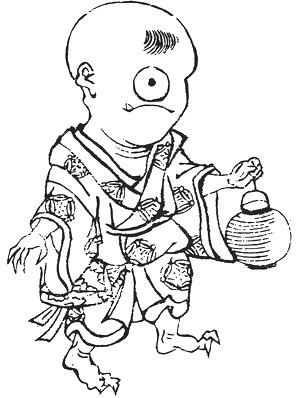
For he
had sacrificed
his other eye in
order to gain
wisdom; Mercury
is often
invisible
because his
orbit goes down below
the horizon (the surface of
Mother Earth).

... Ganz ähnlich
is der Name
'Gott von
Duazag' des
Gottes Nabū
... zu erklären.
Er bezeichnet
ihn als den Gott
des Wachtstums,
welches als aus
dem Osten
stammend
betrachtet wird,
weil die Sonne,
die das Wachstum
bringt, im Osten
aufgeht.
Dass aber
Nabū als
Ost-Gott
aufgefasst
wurde, hängt
damit zusammen,
dass sein Stern,
der Mercur, nur
im Osten oder
Westen sichtbar
ist ...
Mercury was a
dual nature,
both 'male'
- above, up in
the 'tree', i
nika(u),
upright, and
'female', below,
i raro,
down in the
ground - which could
explain why his
horse (Sleipner) had
a double set of legs.
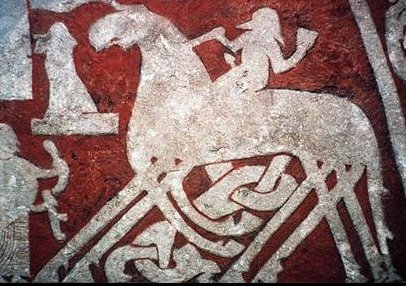 And
possibly also why there
was a niu
described as
double where St
George battled
with the Dragon
(and perished):
...
St George, who
died in April 23
in the year 303
AD, was
celebrated in
April 23 ...
|
The
rongorongo
glyphs
seem to
refer to
a grid
of right
ascension
days and
therefore
April 23
(Bb11-33)
at
Mira/Khambalia
should
be ca 16
days
before
these
stars
returned
to
visibility
(in day
129
resptively
in 312).
Although
my
assumption
of *64
precessional
right
ascension
days
down to
the
Golden
Era of
the Bull
need to
be
adjusted
with +16
days in
order to
accommodate
for the
ancient
rule of
return
to
visibility.
For
instance 49
(FEBRUARY
18) + 16
= 65
(MARCH
6).
As I
have
hinted
at below
this
fact
might
well
be
responsible
for how
half a
year
later
than the
true
heliacal
dates
the
corresponding
nakshatra
day
numbers
evidently
are 16
days
lower
than the
intended
numbers.
664
(October
26) for
instance,
when the
star
71
Virginis
returned
to
visibility
after
the
close
encounter
with the
rising
Sun, was
16 days
after
October
10, its
true
heliacal
right
ascension
day. The
number
of
glyphs
on side
b of the
A tablet
was
designed
to be
664.
Observation
of the
stars at
the Full
Moon
were not
impeded
by the
rays
from the
rising
Sun.
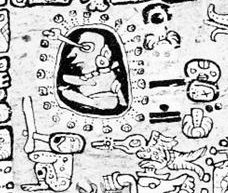 |
|
JAN 27 |
28 |
7 |
FEBR 5
(36) |
6 (53 -
16 = 37) |
11 |
FEBR 18
(65 - 16) |
 |
 |
 |
 |
 |
|
Bb11-11
(850) |
Bb11-12
(430) |
Bb11-20 |
Bb11-21
(860) |
Bb11-33
(872) |
|
April 1
(91) |
2 |
April 10
(100) |
11 (466) |
23
(St
George
†) |
|
The Legs
(*11.4) |
The Whip
(*12.4) |
The Knee
(*20) |
δ
Phoenicis
(*21) |
Mira = ο
Ceti
(*33) |
|
Oct 1
(274 =
290 - 16) |
2 |
Oct 10
(648 =
664 - 16) |
11 (284
= 300 -
16) |
Oct 23
(296) |
|
Alioth
(*194) |
Minelauva
(*195) |
71
Virginis
(*203) |
No star
listed
(*204) |
Khambalia
(*216.4) |
|
Niu.
Palm
tree,
coconut
tree;
hua niu,
coconut.
Vanaga.
Coconut,
palm,
spinning
top. P
Pau.,
Ta.:
niu,
coconut.
Mgv.:
niu,
a top;
niu
mea,
coconut.
Mq.:
niu,
coconut,
a top.
Churchill.
The
fruit of
miro.
Buck. T.
1.
Coconut
palm. 2.
Sign for
peace.
Henry.
The
sense of
top lies
in the
fact
that the
bud end
of a
coconut
shell is
used for
spinning,
both in
the
sport of
children
and as a
means of
applying
to
island
life the
practical
side of
the
doctrine
of
chances.
Thus it
may be
that in
New
Zealand,
in
latitudes
higher
than are
grateful
to the
coconut,
the
divination
sense
has
persisted
even to
different
implements
whereby
the
arbitrament
of fate
may be
declared.
Churchill
2.
Nikau.
Mgv.:
The coco
palm.
Ta.:
niau,
coconut
leaf.
Ha.:
niau,
stem of
the
coconut
leaf.
Ma.:
nikau,
an areca
palm.
Churchill.
Mgv.:
niu,
the
coconut
palm
when
young,
ripening
into
nikau.
... the
ni
of New
Caledonia
leads us
to infer
that
niu
was
anciently
a
composite
in which
ni
carried
at least
some
sort of
generic
sense,
it being
understood
that
this
refers
to those
characteristics
which
might
strike
the
islanders
as
indicating
a genus.
In
composition
with
kau
tree we
should
then see
nikau,
the
ni-tree,
serving
in
Mangareva
for the
coconut
palm, in
New
Zealand
for the
characteristic
palm (Areca
sapida)
of that
land, in
Tahiti
as
niau
for
coconut
leaf,
and as
niau
in
Hawaii
for the
leaf
stalk of
the
coconut.
The
ni-form
is found
in
Micronesia,
and in
the
Marshall
Islands
ni
is the
coconut.
Churchill
2.
Nika.
'Savage
tribes
knew the
Pleiades
familiarly,
as well
as did
the
people
of
ancient
and
modern
civilization;
and
Ellis
wrote of
the
natives
of the
Society
and
Tonga
Islands,
who
called
these
stars
Matarii,
the
Little
Eyes:
The two
seasons
of the
year
were
divided
by the
Pleiades;
the
first,
Matarii
i nia,
the
Pleiades
Above,
commenced
when, in
the
evening,
those
stars
appeared
on the
horizon,
and
continued
while,
after
sunset,
they
were
above.
The
other
season,
Matarii
i raro,
the
Pleiades
Below,
began
when, at
sunset,
they
ceased
to be
visible,
and
continued
till, in
the
evening,
they
appeared
again
above
the
horizon. Gill
gives a
similar
story
from the
Hervey
group,
where
the
Little
Eyes are
Matariki,
and at
one time
but a
single
star, so
bright
that
their
god
Tane
in envy
got hold
of
Aumea,
our
Aldebaran,
and,
accompanied
by
Mere,
our
Sirius,
chased
the
offender,
who took
refuge
in a
stream.
Mere,
however,
drained
off the
water,
and
Tane
hurled
Aumea
at the
fugitive,
breaking
him into
the six
pieces
that we
now see,
whence
the
native
name for
the
fragments,
Tauono,
the Six,
quoted
by
Flammarion
as
Tau,
both
titles
singularly
like the
Latin
Taurus.
They
were the
favorite
one of
the
various
avelas,
or
guides
at sea
in night
voyages
from one
island
to
another;
and, as
opening
the
year,
objects
of
worship
down to
1857,
when
Christianity
prevailed
throughout
these
islands.' (Allen)
 |
|
... When
the
'Crooked
Claw' (Khambalia)
- the
reaper's
instrument
- was
seen at
the Full
Moon in
April 23
it
portended
death of
the
southern
summer
year.
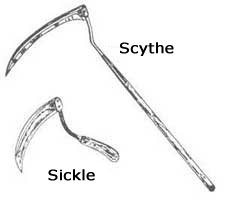
And when
Mira was
at the
Full
Moon in
October
23 it
was the
opposite,
the
death of
the
winter
year:
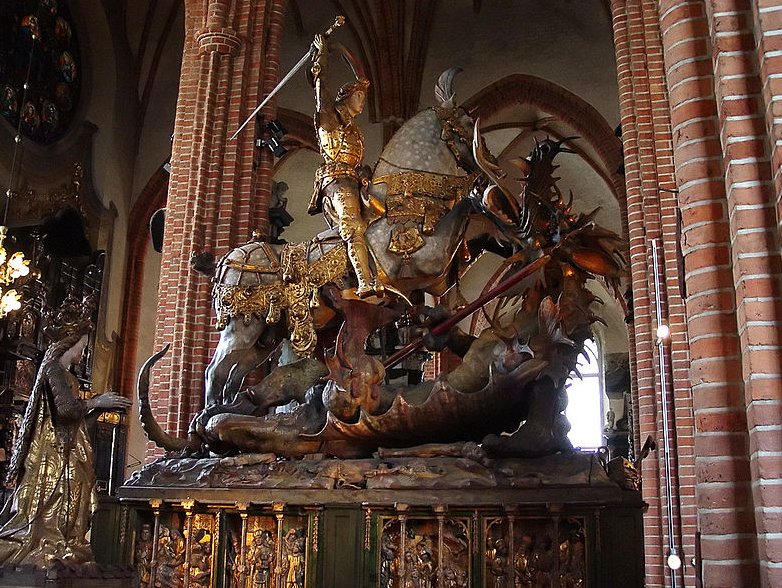 |
Once again.
The current right
ascension line 18h (= 6h
+ 12h) = *273.4 - 'the
(N)ash line' - was at
Nash (γ
Sagittarii), i.e. half a
year after
'the line of fire',
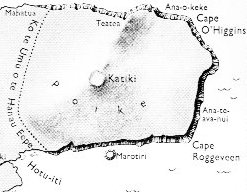
... It should be
stated right now
that 'fire' is
actually a great
circle reaching from
the North Pole of
the celestial sphere
to its South Pole
...
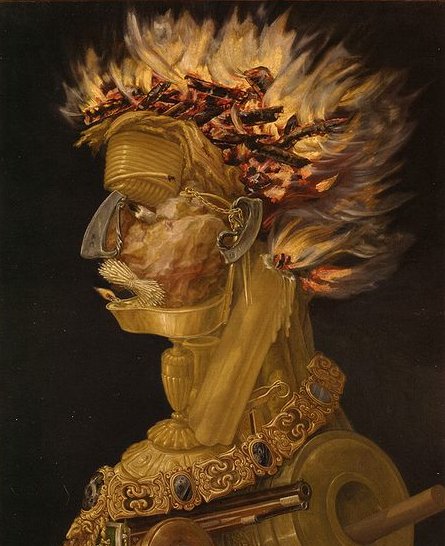
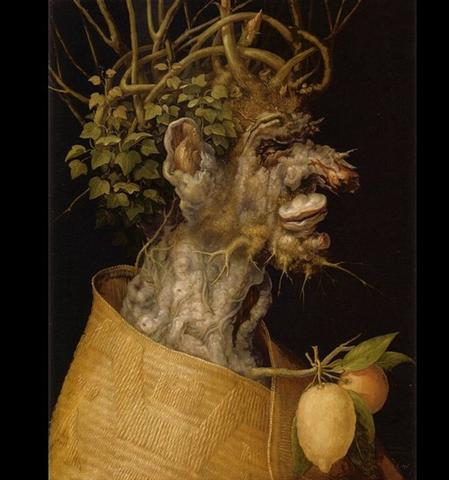
which at the time
of the Bull would have
been in December 19
(353) - 64 = 289
(OCTOBER 16) = *209 =
*26 (APRIL 16) + *183.
|
46 (= 364 /
4 - 24 - 21) |
|
APRIL 15
(105) |
16 (*26) |
42 |
MAY 29 (*69) |
30 (150 =
105 + 45) |
 |
 |
 |
 |
|
Ga1-25 |
Ga1-26 |
Ga3-10 |
Ga3-11 (70) |
|
June 18
(169) |
June 19
(*90) |
Lughnasadh |
Aug 2 (214
→
Febr 14,
45) |
|
Praja-pāti
(*89)
|
"May 9 (*49) |
Solstice
(172) |
"June 22
(*93) |
|
Dec 18 (352) |
Dec 19 (18h,
*273.4) |
Solstice
(355) |
"Dec 22
(*276) |
|
ζ Serpentis
(*272.4)
|
Nash (*273 →
3 * 91)Winnowing
Basket |
Jan 31 (213
+ 183 - 365) |
Febr 1
(*317) |
|
OCT 15
(288) |
OCT 16 (289
→ 273 + 16) |
NOV 28 (332
= 316 + 16) |
29 (*253) |
|
... Early on Sunday morning, 14 February 1779, Captain Cook went ashore with a party of marines to take the Hawaiian king, Kalaniopu'u, hostage against the return of the Discovery's cutter, stolen the night before in a bold maneuver - of which, however, the amiable old ruler was innocent. At the decisive moment, Cook and Kalaniopu'u, the God and the King, will confront each other as cosmic adversaries. Permit me thus an anthropological reading of the historical texts. For in all the confused Tolstoian narratives of the affray - among which the judicious Beaglehole refuses to choose - the one recurrent certainty is a dramatic structure with the properties of a ritual transformation. During the passage inland to find the king, thence seaward with his royal hostage, Cook is metamorphosed from a being of veneration to an object of hostility. When he came ashore, the common people as usual dispersed before him and prostrated face to earth; but in the end he was himself precipitated face down in the water by a chief's weapon, an iron trade dagger, to be rushed upon by a mob exulting over him, and seeming to add to their own honors by the part they could claim in his death: 'snatching the daggers from each other', reads Mr. Burney's account, 'out of eagerness to have their share in killing him'. In the final ritual inversion, Cook's body would be offered in sacrifice by the Hawaiian King ... ... Once upon a time there was an old woman who owned a great potato field where she planted her potatoes in spring and harvested them in autumn. She was famous all around for her many varieties of wonderful potatoes, and she had enough of them to sell at the market place. She planted her potatoes 7 in a row, placing her foot in front of her as a measure from one potato to the next. Then she marked the place with a bean - which would also give nourishment to the surrounding potatoes. Next she changed variety and planted 7 more followed by another bean, and this was the pattern she followed until all her 214 varieties had been put down in their proper places. She had drawn a map which she followed and from where each sort of potato could be located at the proper time for its harvest. I was fascinated, when I happened to stumble on this Swedish TV program, because my 'once upon a time' was now and 214 (= 2 * 107) was surely no coincidence. She knew what she was doing. Let's therefore count: 214 * 7 (potatoes) + 213 (beans) = 1711. So what? Probably because 1711 = 59 * 29 ...
... The
Hawaiian
woman who
was
interviewed
chuckled
because the
assassination
of Captain
Cook
coincided
with the day
we have
named All
Hearts' Day
- when
in February
14 (2-14)
the war-god
Kuu
returned to
power
... |
After the right
ascension line for 6h
('fire') in
June 20 came the Milky
Way River with Gemini.

...
What happens after (or
happened, or will happen
sometime, for this myth
is written in the future
tense), is told in the
Völuspa, but it is also
amplified in Snorri's
Gylfaginning (53), a
tale of a strange
encounter of King Gylfi
with the Aesir
themselves, disguised as
men, who do not reveal
their identity but are
willing to answer
questions: 'What happens
when the whole world has
burned up, the gods are
dead, and all of mankind
is gone? You have said
earlier, that each human
being would go on living
in this or that world.'
So it is, goes the
answer, there are
several worlds for the
good and the bad. Then
Gylfi asks: 'Shall any
gods be alive, and shall
there be something of
earth and heaven?'
And the answer is: 'The
earth rises up from the
sea again, and is green
and beautiful and things
grow without sowing.
Vidar and Vali are
alive, for neither the
sea nor the flames of
Surt have hurt them and
they dwell on the
Eddyfield, where once
stood Asgard. There come
also the sons of Thor,
Modi and Magni, and
bring along his
hammer. There come also
Balder and Hoder from
the other world. All sit
down and converse
together. They rehearse
their runes and talk of
events of old days. Then
they find in the grass
the golden tablets that
the Aesir once played
with ...
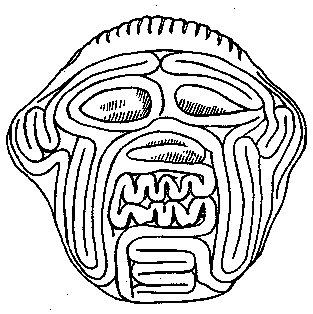
|






.jpg)

















